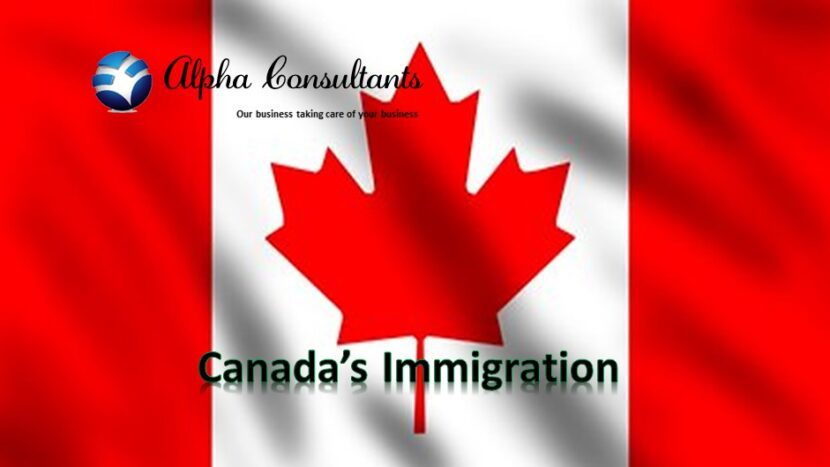Expectations for Canadian Immigration in 2024
Below are Expectations for Canadian Immigration in 2024, As announced in the Immigration Levels Plan for 2024-2026, Canada aims to welcome a total of 485,000 permanent residents (PRs) in 2024. Alongside this increased level of immigration, Canada is expected to launch updates across various programs and leverage Artificial Intelligence (AI) to streamline the client experience.
Updates to the Express Entry System
In 2023, IRCC began conducting category-based Express Entry draws. These draws were implemented to help Canada find foreign nationals best suited to address the country’s most pressing labour gaps and demographic needs.
In the first year of category-based draws, IRCC chose to prioritize the following categories of immigration candidates.
- Those with French language proficiency
- Those with recent work experience in any of the following five industries: Healthcare; Science, Engineering, Technology and Mathematics (STEM); Trades, Transport and Agri-Food/Agriculture
Expectations for Canadian Immigration in 2024:
In 2024, IRCC is expected to continue with category-based draws. However, the department has made it clear that they will reassess the focus categories chosen for 2023 and potentially alter them based on the changing needs of Canada’s labour market. This means that new sectors and proficiencies may be chosen as areas of focus by IRCC, potentially enabling new groups of newcomers to be eligible for category-based Express Entry draws this coming year.
New Provincial Nominee Program Guidelines
Provincial Nominee Programs (PNPs) are immigration pathways that allow local governments to hand-select candidates that will best help them address labour market gaps. According to IRCC’s latest Immigration Levels Plan, PNPs are projected to make up the country’s biggest (by immigration targets) immigration pathway in 2024.
Provinces were recently provided with a new set of guiding principles for PNPs.
IRCC is also introducing new multi-year plans for the PNP starting in 2024. This will enable provinces and territories to better planfor their immigration strategies, as they will know their 2025 allocation a year in advance.
Taken together, these new PNP developments mean that prospective newcomers pursuing this immigration pathway should have a clearer picture of their options to immigrate to their province or territory of choice due to better planning by each regional government.
More Parents and Grandparents Program admissions spaces
In 2023, Canada aimed to welcome 28,5000 immigrants through the Parents and Grandparents Program (PGP).
In 2024, the latest Immigration Levels Plan indicates that PGP targets will grow to 32,000. Should IRCC prove able to improve “intake management and the alignment of [application] inputs and outputs”, more PGP applicants should be able to come to Canada in the coming year.
Enhancements to Canada’s International Student Program
To strengthen the integrity of the International Student Program across Canada and better protect incoming foreign nationals, IRCC has launched a reformed Letter of Acceptance (LOA) verification system that will continue to impact all study permit applicants.
Beginning on December 1 this year, Designated Learning Institutions (DLIs) across Canada are now “required to confirm every applicant’s letter of acceptance directly with IRCC.” The department says that this “new, enhanced verification process aims to protect prospective students from fraud while ensuring that study permits are issued based only on genuine LOAs.”
IRCC also announced in November that, leading into 2024, the department will be conducting a review of its Post-Graduation Work Permit (PGWP) program. Many international students who intend to apply for PR benefit from the PGWP, as the Comprehensive Ranking System (CRS) score treats Canadian work experience favourably.
This review is expected to result in IRCC “introducing reforms [that] better calibrate the [PGWP] to the needs of the country’s labour market, as well as regional and Francophone immigration goals.”
More changes are coming to Canadian immigration next year
IRCC has committed to several other changes intended to improve the experience and life of Canadian newcomers making their way through the immigration process.
Increasing the use of AI and technology
In an effort to “out-compete other countries for talent,” IRCC has committed to further the use of technology and AI in the immigration space in 2024. This initiative aims to reduce processing times, improve tools for IRCC officers, help Canada meet the country’s immigration, and diversity priorities.
Specifically, this digital transformation will improve the client experience for immigration candidates in several ways, including but not limited to:
- Improving service standards
- Strengthening partnerships with employers and institutions that rely on immigration, while addressing fraud and strengthening student and worker protections
- Making applications more user-friendly using digital and virtual technologies
Note: Changes like the above, and more, have all been outlined here as part of Canada’s Digital Platform Modernization initiative
New IRCC advisory board
Furthermore, IRCC will develop a new advisory body to focus on matters relating to immigration policy and service delivery. Uniquely, this board will include people “with lived experience in immigration”, allowing newcomers to Canada to have more say in programs and processes affecting them. This new advisory board hopes to “strengthen policy and program development [while ensuring that Canada’s immigration system remains anchored] in a human-centric approach.”
Introduction of the Chief International Talent Officer
Finally, Canada’s immigration department will introduce a brand-new role called the Chief International Talent Officer (CITO). Their primary responsibility is to improve the alignment between the country’s immigration system and its national labour market and sectoral strategies.
According to the department, “the responsibilities of [this individual] entails the ability to affect a huge amount of change in Canada’s annual immigration.” Prospective immigrants to this country in 2024 and beyond should pay attention to developments once someone is appointed.

